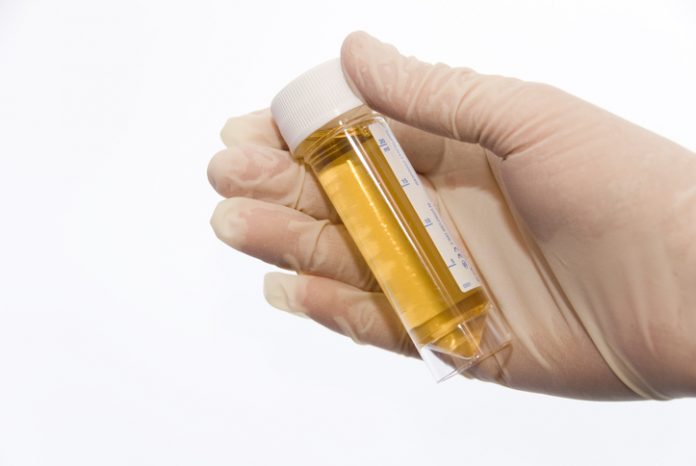
Validation testing on the UroAmp test, a urine-based test that detects mutations in 60 genes, was shown to predict bladder cancer up to 12 years before diagnosis. Using two independent cohort studies, researchers from the International Agency for Research on Cancer (IARC) in Lyon, France discovered that urinary comprehensive genomic profiling detected preclinical cancer in 86% of patients up to seven years prior to clinical diagnosis.
“Our results provide the first evidence for a population-based prospective cohort study of the potential of preclinical urothelial carcinoma detection with urinary comprehensive genomic profiling (UCGP),” said study author Florence Le Calvez-Kelm, of the IARC. She presented their findings at the European Association of Urology (EAU) annual Congress in Milan.
Several years ago, Le Calvez-Kelm developed a single gene urine based test, limited to mutations in the TERT gene, the most common genetic alteration in bladder tumors. In collaboration with the researchers at the University of Medical Science in Tehran, Iran, her team analyzed the test in the Golestan prospective cohort study which enrolled and followed more than 50,000 Iranians for more than 15 years. Forty people within the study developed bladder cancer during a ten-year period. Using prediagnostic urine samples from 29 of these 40 people, she showed in a 2020 paper that the TERT promoter mutation could be detected up to 10 years prior to clinical diagnosis, with a sensitivity of 46% in detecting bladder cancer.
For this study with UroAmp, Le Calvez-Kelm once again studied the Golestan cohort, along with another patient cohort from Massachusetts General Hospital and Ohio State University, probing specificity and to see if it improved the sensitivity of early detection of bladder cancers.
Of the 29 participants who’d developed bladder cancer within the Golestan cohort, the test was able to accurately predict future bladder cancer in 19 (66%) of them. Fourteen of these participants were diagnosed with bladder cancer within seven years of urine collection, and the test was able to predict cancer in 12 (86%) of these. The test was accurately negative in 94 of the 98 participants (96%) who would not develop cancer in the future. Among those where the test was negative but who did eventually develop bladder cancer, no cancer was diagnosed until at least six years after the urine collection.
This study also tested urine samples from 70 bladder patients from the MGH/OSU cohort with known risk factors undergoing cystoscopy. In contrast with the Golestan study, some of these samples were provided by cancer patients on the day they were diagnosed, rather than many years before.
Le Calvez-Kelm’s team found mutations in urine samples from 50 of the 70 patients (71%) whose tumors were visible during the cystoscopy. Some of these were new diagnoses and others involved a cancer recurring. Mutations were not found in 90 of the 96 (94%) patients with a negative cystoscopy.
“In this study, we identified 10 genes as having optimal features for a screening model,” says Le Calvez-Kelm, but this smaller gene set was not evaluated in this study.
This IARC research found that sensitivity of the UroAmp study increased as the time to diagnosis decreased. “The closer we get to diagnosis, the higher the sensitivity,” she adds.
Looking at disease-free survival data from the Golestan cohort, patients with a positive test had significantly worse outcomes compared with those negative urine samples.
“Our baseline TERT test predicted 48% of future cancer and that was increased to 66% using UCGP, with only a small decline in specificity in the acceptable range,” said Le Calvez-Kelm. “And when we limited the diagnosis within the seven years prior to clinical diagnosis, UroAmp detected preclinical cancer in 86%.”
The IARC team says that the test, which is not yet commercially available, may be most useful for high-risk patients and for bladder cancer recurrence. It may be too cost-prohibitive for screening, but it could be very useful for people with hematuria, or blood in the urine. “I foresee justifying the cost if we can demonstrate that a non-invasive, urine-based assay like this significantly reduced the number of cystoscopy procedures which is part of the regular management of people with hematuria,” says Le Calvez-Kelm. She also foresees that the test may also be used for screening other high-risk groups, such as smokers or people exposed to industrial chemicals, two known risk factors for bladder cancer.











